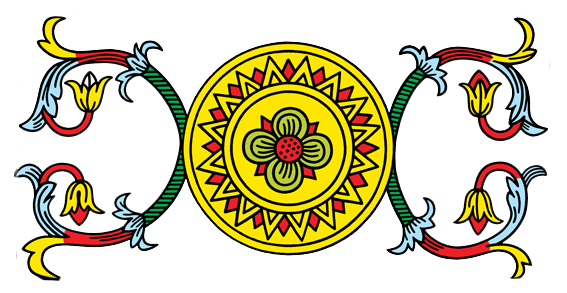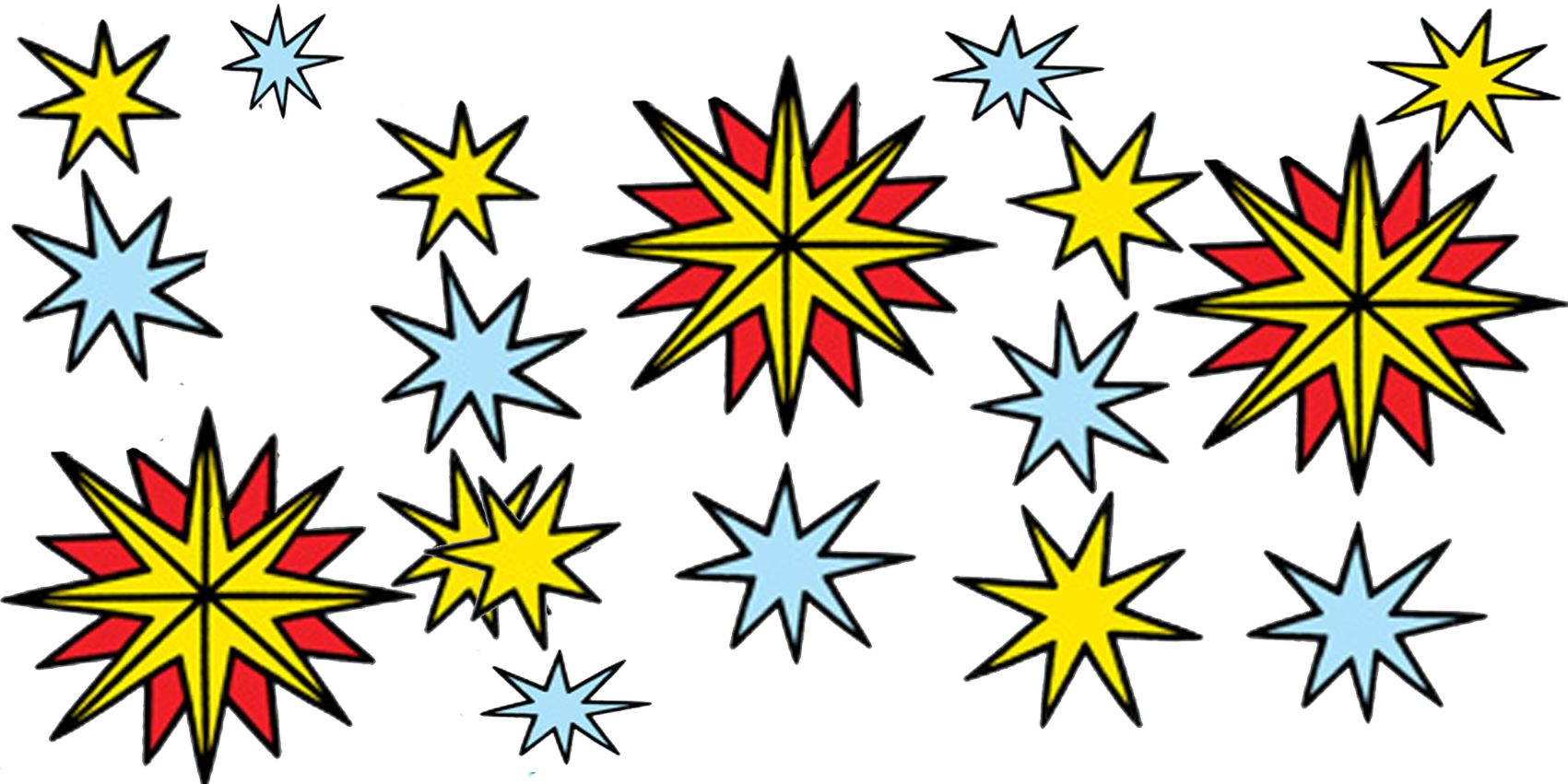
A tarot spread is a predetermined pattern in which each square has a special meaning. There are many presentations, traditional and modern of varying complexity. Some presentations are focused on particular problems, others have a special form.
In principle, you can make your very own layouts, which can be as simple or complicated as you wish. A layout is made by shuffling the cards and laying them out in numerical order. The cards are placed face up, unless otherwise stated.
 |
 |
 |
The simplest layout consists of 3 cards in a row.
It is a limited presentation, but excellent to practice as it is quite clear. You can adjust the presentation yourself according to your own needs. For example, if you want to know something about what the coming day will bring, you can make a presentation where the three cards each represent a) morning, b) afternoon and c) evening.
Another example is if you want to know what you have to decide on in a given situation, you can make the three cards represent respectively a) options b) the future if this choice is made and c) the reaction of the environment.
Feel free to draw another card and place it to the right of card #3. This card is called “The Significator” or “The Good Counsel” and can be read as a clue as to what the final overall outcome of your question will be be.
You can choose to use the significator in all tarot readings, however some already have a card that shows the same as the significator stands for, which is why its relevance there is limited.
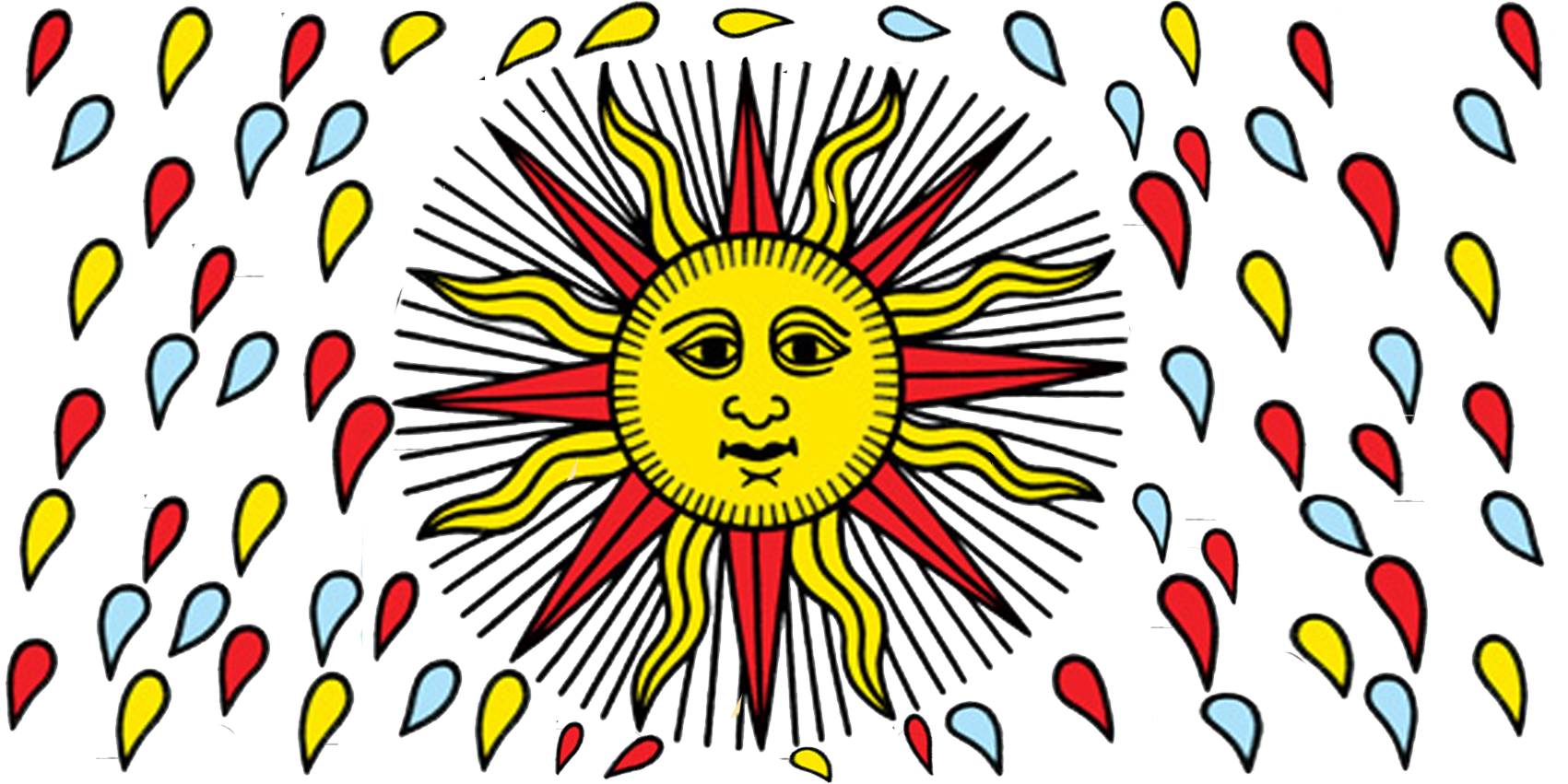
A little more complicated is the Celtic presentation.
The Celtic Tarot layout is made by placing three cards horizontally and two horizontally, so that they form a cross. Four cards are placed to the right of the cross.
The horizontal cards tell about the past, present and future. The vertical cards tell about consciousness and subconsciousness. The middle of the cross tells about the core of the matter and finally the four cards to the right of the cross are used to illuminate the question from the outside.
The Celtic layout is very common among tarot readers, but it is just one among many layouts. There are no fixed and unbreakable rules for tarot readings. In principle, you can make your very own layouts, which can be as simple or complicated as you wish.
Since the Celtic layout is very popular among tarot readers, many opinions are attached to this layout in particular about how the “correct” Celtic layout should be done. But it’s really a matter of taste. There are no definitive rules.
Below you can see popular tarot spreads, including three different ways to lay the Celtic cross.
The Celtic layout
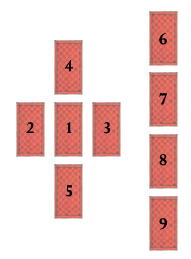
1. Present time. The crux of the matter.
The current circumstances of the questioner.
2. Ahead of time.
Previous events.
3. Future.
Future events.
4. Awareness.
Current influences.
5. Subconsciousness.
The questioner’s feelings.
6. The environment
What others think about the question.
7. What do I mean myself.
One’s own point of view, seen from the outside.
8. Energies
What promotes or hinders the situation.
9. Result/decision.
The final outcome.
The Celtic Presentation II
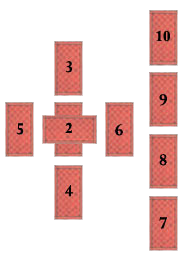
1. The basic map.
Your basic situation, starting position.
2. Influences
What inhibits or promotes (crosses) the basic situation.
3. Awareness
Your conscious thoughts about the question / situation.
4. Intuition
Your unconscious thoughts about the question / situation.
5. Past
Past influences or what is just passing.
6. Future
Future influences, or that which is just beginning.
7. You
Yourself, your attitude and approach to the question / situation.
8. Energies
The energies with which the outer world meets you.
9. Aspiration
Your hopes and fears.
10. Result
The result, exit, key.
The Celtic Presentation III
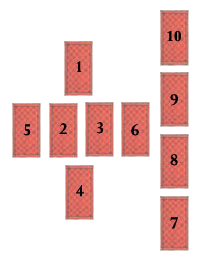
1. Head.
2. Left (passive/susceptible) heart side.
3. Right (active) heart side.
4. Stomach.
5. Past.
6. Future.
7. The energy with which you go out into the world.
8. The energy with which the outer world meets you.
9. Hopes and fears.
10. Result, exit, key.
The Horseshoe
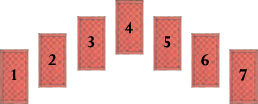
Used as guidance for a specific problem.
1. Past.
2. Present.
3. Future.
4. What occupies your thoughts.
5. Others’ attitudes.
6. Obstacles that must be overcome.
7. Outcome.
The only one
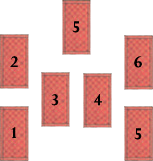 Used when you are looking for the big love.
Used when you are looking for the big love.
1. Why you haven’t met the right one yet.
2. How to overcome the obstacles from map 1.
3. What is the best thing you can do to find a partner .
4. Who will be the right one for you.
5. Where will you find that person.
6. When you want to meet the person.
7. The Significator (optional card)
New Flame
 Used when you have met a potential partner
Used when you have met a potential partner
and wondering how you fit together.
1. The reason for the attraction.
2. Whether the person is worth betting on.
3. How happy you can be together.
4. How you will support each other in everyday life.
5. How you fit together sexually.
6. How your families fit together.
7. How your religion/view of life matches.
8. How trust and respect will work between you.
9. The duration of the relationship.
10. The outcome.
The horoscope
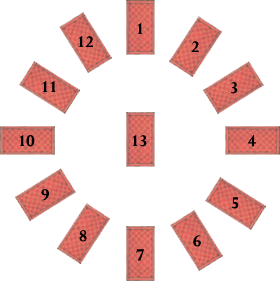 This layout is linked to the 12 houses in the zodiac (signs of the zodiac) and their characteristics. Can be used for all types of questions. Time horizon must be specified in advance, e.g. a year into the future.
This layout is linked to the 12 houses in the zodiac (signs of the zodiac) and their characteristics. Can be used for all types of questions. Time horizon must be specified in advance, e.g. a year into the future.
1. Aries
Personality, identity, appearance.
2. The bull
Values, possessions, finances.
3. Gemini
Communication, mental activity, education.
4. Cancer
Home, family, security, surroundings.
5. The lion
Creativity, art, entertainment, child.
6. The Virgin
Health.
7. The weight
Partnership.
8. Scorpio
Sex, the occult, gifts/losses.
9. Sagittarius
Travel, exploration, philosophy.
10. Capricorn
Recognition, job, career, ambitions.
11. Aquarius
Friends, group affiliation.
12. Pisces
Subconscious, secrets.
13. Significator
Voluntary card.
The Calendar

The above presentation can be used in the version called the calendar.
The presentation looks at the development month by month.
1. January.
2. February.
3. March.
4. April.
5. May
6. June.
7. July.
8. August.
9. September.
10. October.
11. November.
12. December.
13. Continuous features.
Chakra
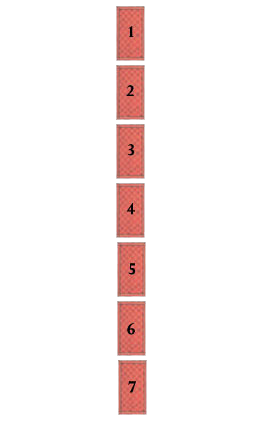 By reading the chakras using tarot cards , can you get
By reading the chakras using tarot cards , can you get
information about how the seven centers work.
1. Root chakra
Contact with the earth, matter.
2. Hara chakra
Center for basic energy, element water.
3. Solar plexus
Element Fire.
4. Heart chakra
Heart, element air.
5. Throat chakra
Communication.
6. The third eye
Intuition.
7. Crown Chakra
Spiritual awareness.
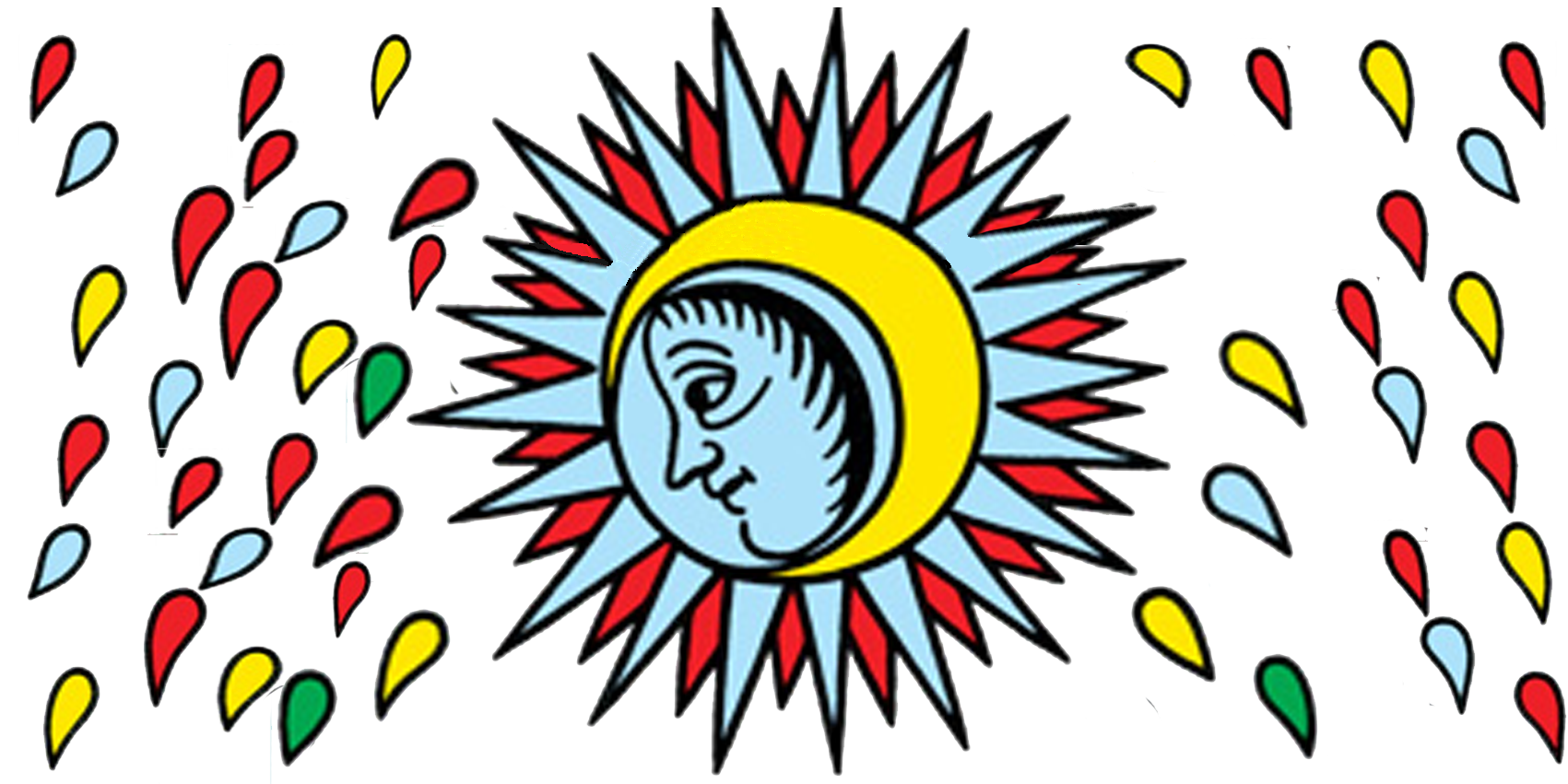
How is made
a tarot spread
Clean the cards
Start by clearing your tarot cards of unwanted energy. If others touch one’s cards, they can pick up unwanted vibrations – and as with minerals, crystals and stones, it is believed that the cards should be regularly cleansed of unwanted energy collections. There is thus believed to be a risk of incorrect interpretation if the cards contain too many unwanted energy collections.
So you should respect other people’s tarot cards and not touch them without the owner’s permission. This is of course not possible during a session, but fortunately there are a number of methods with which you can clean your cards.
For example, you can place a crystal on top of your tarot cards or you can conduct a healing session where you mentally “pull” the energy vibrations out of the cards, encapsulate them in a small blue ball of light and sends this off into the universe.
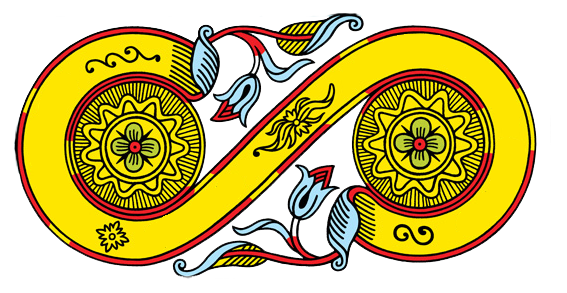
Shuffle the cards
You shuffle your tarot cards the same way you would shuffle regular playing cards. While shuffling the tarot cards, you must focus on the main question posed to the cards.
If there are several important sub-questions, you can divide the pile into several and mix these separately while focusing on the sub-question. As intuition is believed to lie in the left hand, it is recommended to use this to distribute the cards on the chosen layout.
The shuffling of the cards is a kind of ritual preparation that gives your subconscious time to bring itself into deeper harmony with the particular situations or questions you wish to present to the tarot cards. It is therefore recommended that you find your own little introductory ritual when you have to mix the cards.
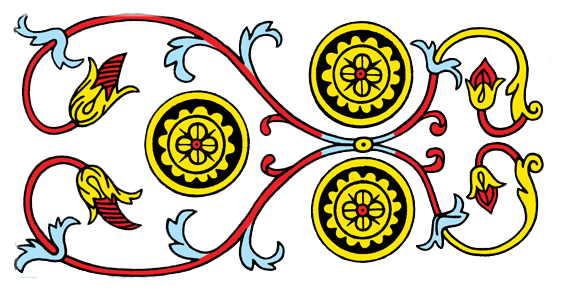
Place the cards
A reversed card is a card that is turned upside down in a layup. Some attach a meaning to this, while others prefer to ignore it and just turn it the right way. Of those who attach importance to it, it is believed either that the card’s result will be slightly delayed, or decidedly that the card’s result will be the reverse of what the card normally means.
If there are any cards that fall on the floor during the shuffle or during the interpretation, this is noted before the card is put back. This is to be aware of whether this card might have a special message in relation to the question.
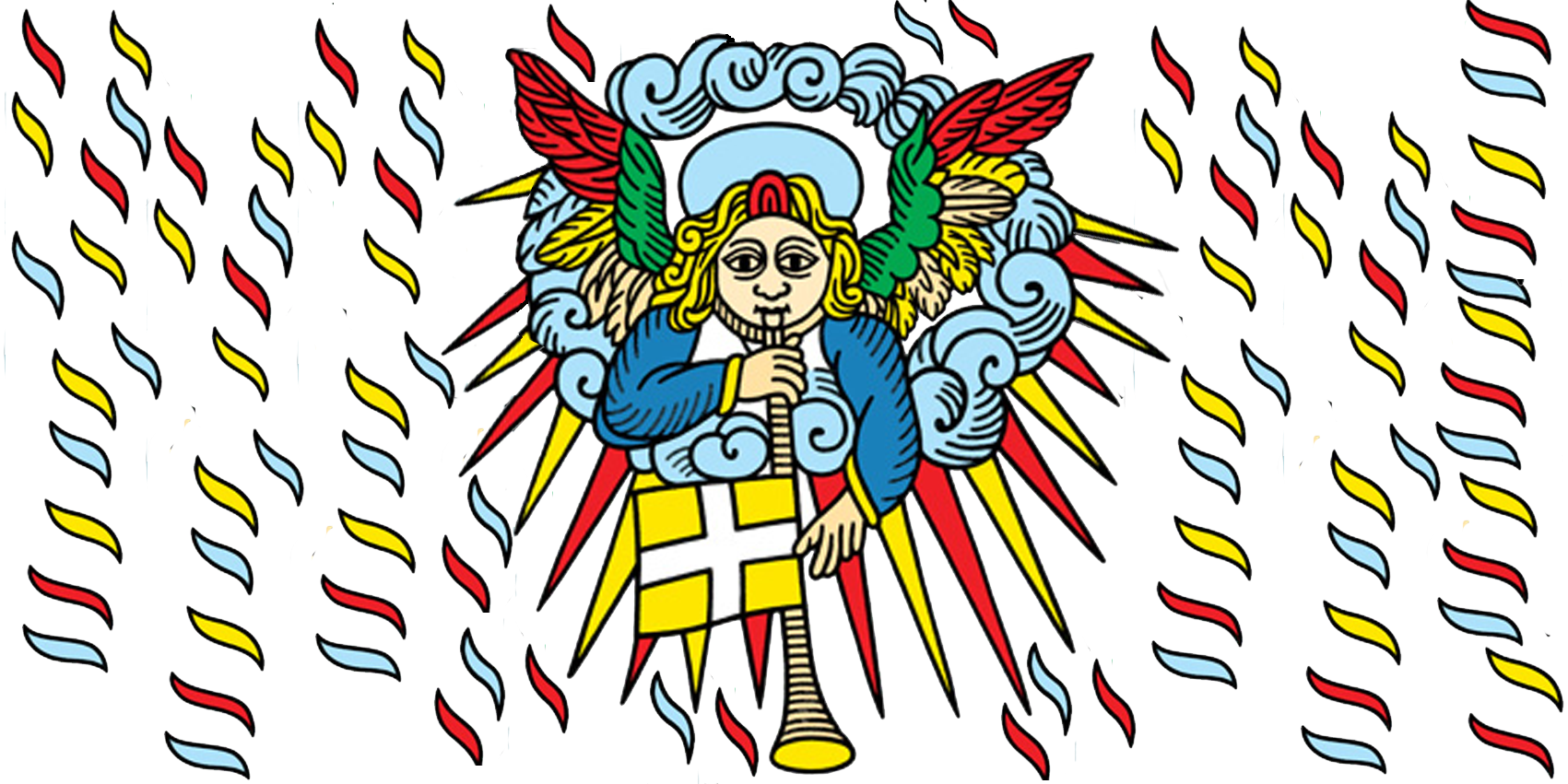
The most important thing in your choice of tarot deck is to choose one that is suitable for answering the question or issue presented to the cards . Next, it is important that you choose a tarot reading that you are comfortable with. One that immediately appeals to you and that you find suitable.
